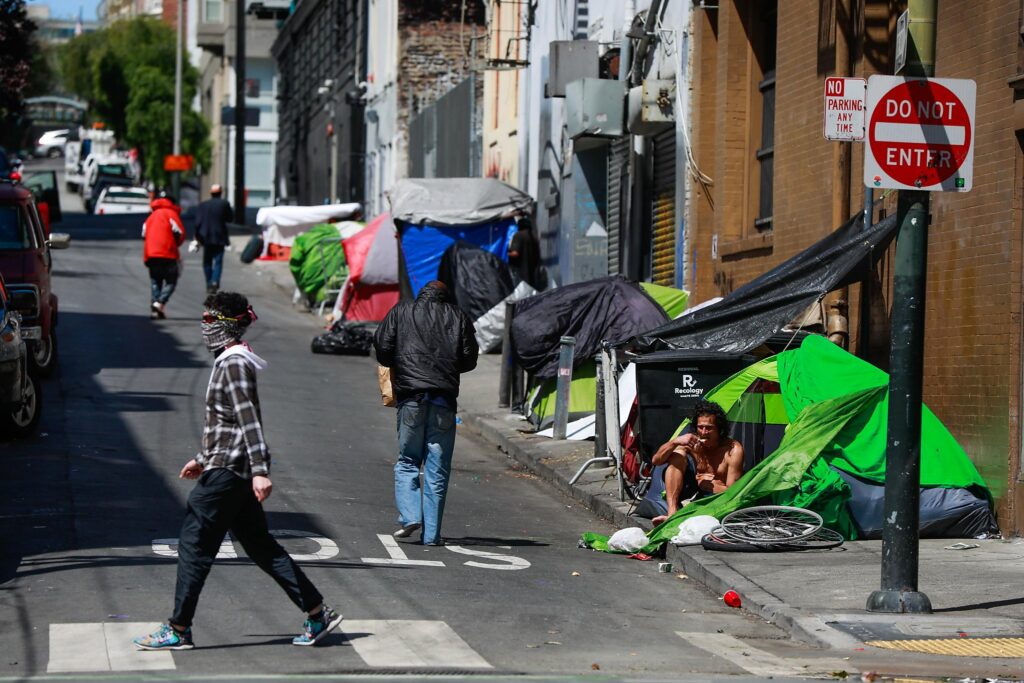“SAN Fransicko” by San Francisco native Michael Shellenberger is a fine book about the homelessness crisis in the city by the bay. In his youth, he said he was a socialist eco-anarchist who read Noam Chomsky’s books. Today, well, let’s just say that “San Fransicko’s” subtitle is, “Why Progressives Ruin Cities.” The author was an unsuccessful Democratic candidate in California’s 2018 gubernatorial primary. This year, he is an independent gubernatorial candidate.
Shellenberger, who will be 51 in June, is also the author of the bestselling “Apocalypse Never: Why Environmental Alarmism Hurts Us All.” Clearly, he is able and willing to wade into highly contentious political waters. Not surprisingly, a reader’s reaction to his books usually depends on the reader’s politics.
As someone who has been a progressive and a Democrat all his life, he noted that between 2008 and 2019, “eighteen thousand companies, including Toyota, Charles Schwab, and Hewlett-Packard, fled California due to a constellation of problems sometimes summarized as ‘poor business climate.’ California has the highest income tax, highest gasoline tax, and highest sales tax in the United States, spends significantly more than other states on homelessness, and yet has worse outcomes.”
What, he added, “were we getting for our high taxes? And why, after twenty years of voting for ballot initiatives promising to address drug addiction, mental illness, and homelessness, had all three gotten worse?”
He said he wrote “San Fransicko” because he didn’t have the answers to those questions.
Among his findings:
• San Francisco is more generous in its cash payments to homeless, and other spending to serve them, than other cities. “When local, state, and federal funding are accounted for, San Francisco spends $31,985 per homeless person just on housing, not including General Assistance, other cash welfare programs like Temporary Assistance for Needy Families, and other services. By contrast, New York City spends $11,662 and Los Angeles spends $5,001.12.”
• Helping the neediest can create perverse incentives. According to a 2019 survey, just one-fifth of San Francisco’s homeless said they were born in the city. A “homeless man told a reporter that he came from Iowa to San Francisco because he heard ‘social services are plentiful, anyone is welcome and the weather is pleasant.’ ”
“After San Francisco started offering free hotel rooms to the homeless during the 2020 coronavirus pandemic,” Shellenberger wrote, “first responders reported that people had come from across the state. ‘People are coming from all over the place — Sacramento, Lake County, Bakersfield,’ said the city’s fire chief. ‘We have also heard that people are getting released from jail in other counties and being told to go to San Francisco where you will get a tent and then you will get housing.’ ”
• Mental illness and substance abuse are often the underlying causes of homelessness.
• Mandated drug treatment through specialized “drug courts” aimed at addressing the underlying cause of crime, addiction, is effective in reducing drug use and recidivism, or repeat offending.
• California has long been an international psychotherapeutic and psychiatric leader, and voters have repeatedly voted to fund treatment of the mentally ill, including in 2004, when voters passed a ballot initiative that now raises over $2 billion a year for their treatment.
• And yet the numbers of, and trouble with, the homeless mentally ill have risen dramatically.
• Between 2010 and 2020, the number of homeless rose by 31% in California but declined 19% in the rest of the United States.
John Snook, executive director of the Treatment Advocacy Center, told Shellenberger: “California spends more than most places, and yet it came in near the bottom while Arizona, which spends significantly less, came in near the top. When you look at the amount of money being spent, and then you hear the argument that we need more money, you have to ask, ‘How much more?’ Right now it’s just good money after bad.”
Shellenberger himself asked the million-dollar-question, “If poverty, trauma, and structural racism cause addiction, why did addiction worsen over the same period that poverty, trauma, and racism declined?”
America’s social safety net has expanded dramatically over the last half century, he added. “New programs included Supplemental Security Income (SSI) program (1972); the Women, Infants, and Children (WIC) nutrition program (1972); Pell Grants (1972); the Earned Income Tax Credit (1975); the child support program (1975); Low Income Home Energy Assistance Program (1981); Children’s Health Insurance Program (1997); Medicare Part D subsidy for low-income Americans (2003); and the Affordable Care Act (2010).” The list doesn’t include the food-stamp or Supplemental Nutrition Assistance Program which provided over $57 billion in benefits to 40 million Americans in 2018. These benefits were increased following the global spread of the Covid-19 pandemic.
People, Shellenberger said, “appear to behave far better when they take responsibility for their actions than when they don’t.” So “the lesson for anyone who cares about expanding human freedom, as opposed to trying to control others, is that we should be communicating to people that they have far more freedom, not less freedom, than they realize. The more you play the victim, the more of a victim you’ll become.”
I believe he’s right. Which is why I don’t think he’ll win in November.
Send feedback to editor@mvariety.com












